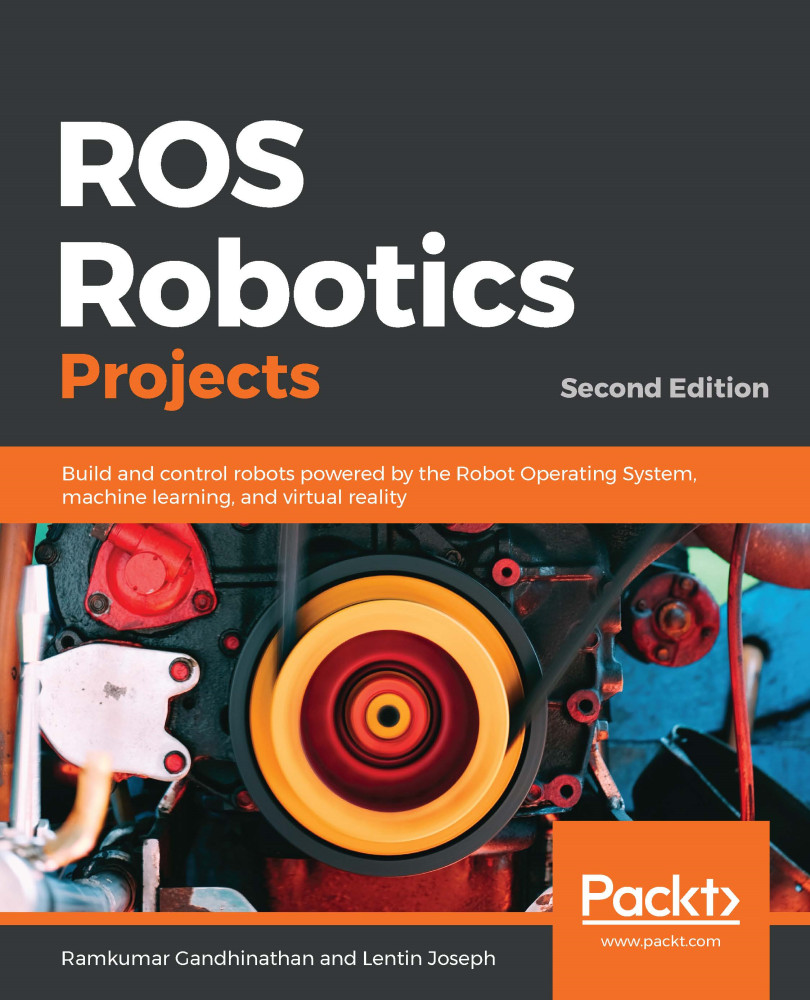The ROS system is a distributed computing environment that can run several nodes—not just on a single machine, but on multiple machines that communicate with each other, provided they are on the same network. This is advantageous in robotics applications as certain sensors demand sophisticated machines.
For instance, if we have a mobile robot that understands the environment through its sensors, such as ultrasonic sensors and cameras, it may need a simple processor that communicates serially with the microcontroller that the ultrasonic sensor is connected to. But a sensor such as a camera may need a more sophisticated processor for processing camera information. Instead of using high-end compute hardware, which is generally costly and sometimes bigger in form, we could make use of cloud services such as AWS or Google Cloud for processing...

































































